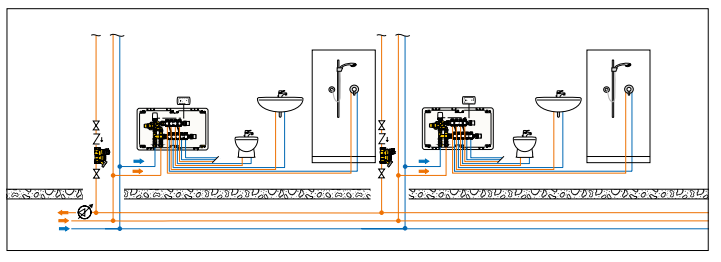Water System Safety with Thermal Balancing Valves
Controlling the safety and hygiene of a water system is an essential element of the overall safety of end-users; preventing scalding and ensuring the growth of harmful bacteria and pseudomonas is minimised should be a priority of those who design, install and maintain the system.
In this blog Stephanie Allchurch, Product Development Manager, goes into detail on how thermal balancing valves can play a key role maintaining the hygiene of a system.
Thermal balancing valves
A thermostatic balancing valve, or thermostatic regulator, is intended to be installed on the return pipe of each re-circulation circuit, it encourages flow to automatically maintain the specified water temperature.
Through design, a thermal balancing valve allows a greater flow below its set point and restricts flow when water temperature rise to the set point, by doing this, clusters of cold water are prevented from being formed throughout the system. Additionally, the valves incorporate a bypass which can opened and allows for a higher flow rate and temperature (usually around 70°C) to move through the system for disinfection purposes, thus removing and killing legionella bacteria. (see application diagram below).

Finding the solution
To offer the full solution, commercial plumbers can also advise the installation of thermal balancing valves. For example, the 116 Series Thermal Balancing Valve from Altecnic regulates and controls the flow rate in accordance with the inlet water temperature. The regulator is equipped with a thermal disinfection function, which is useful if the water temperature exceeds 55 to 60˚C.

